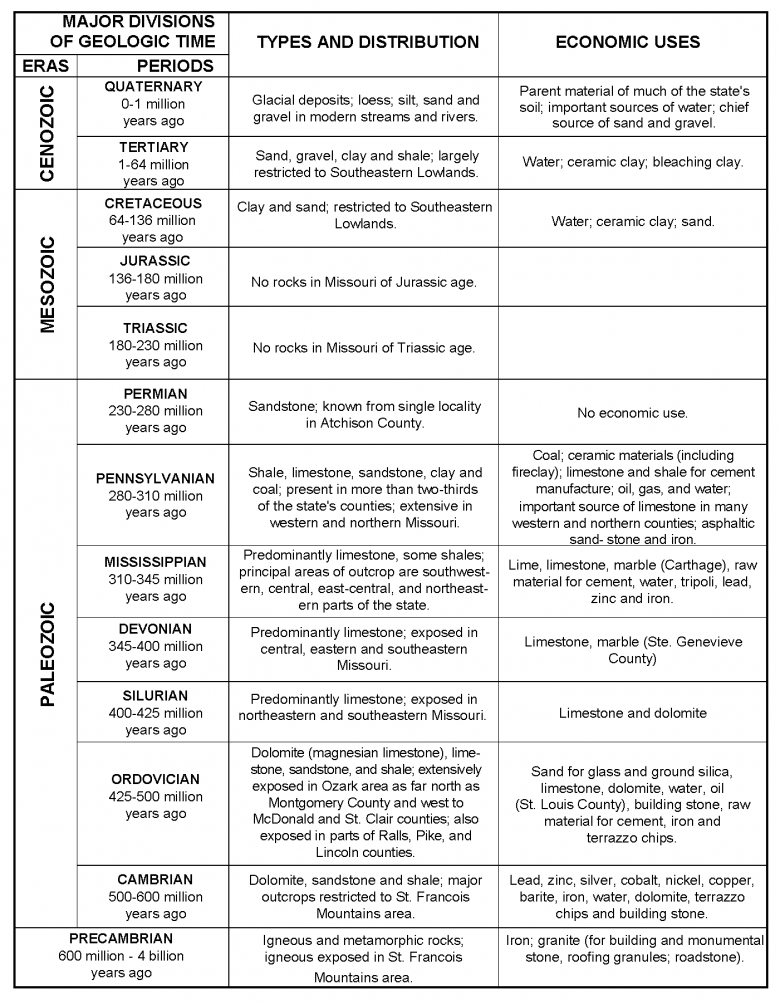Missouri Geological Survey Director: Carey Bridges, RG
On the "geological clock," the age of the

Earth is represented by the 12 hours on the face of the clock. The sweep of the minute hand around the dial twelve times from 12 to 12 marks the passage of time from the beginning of the Earth to today.
At about 4:48, not far from half the Earth’s age, life first appeared. This is not to be classified as either plant or animal life because it possesses the simple properties of each. You are less likely to speculate enthusiastically about the possibilities of human beings on other planets when you contemplate the vast amount of time required to marshal all of the many and varied factors involved in the simple beginning of the Earth. You realize that the likelihood of duplicating the Earth’s multitudes of environments, in the same order and intensity, on other planets is remote.
At about 10:45 plus six seconds, nearly all of the great groups (phyla) of animals were represented by at least a few forms. Even simple vertebrates were probably present although they left no known fossils. For the most part it was only forms that had shells or other hard parts that had a chance to be preserved. When you consider the many forms today that have no hard parts, you realize that fossils alone give a far from complete picture of the past.
At about 11:33 plus 30 seconds, the reptiles started to rule the Earth and continued to dominate until the mammals took over. This was the time of the dinosaurs-large and small, including the plesiosaurs, ichthyosaurs, mosasaurs and pterodactyls. The turtles, crocodiles, snakes and lizards were also present. This was truly the "Age of Reptiles."
At about 11:51 plus 22 seconds, the great ruling race of reptiles had disappeared, and the mammals had taken over the domination of all environments. Quickly, the big clumsy mammals, which were mostly forest dwellers, took the lead. Modern mammals gradually replaced them as the plains grasses developed and the forests shrank.
The Pleistocene Epoch started at about 11:59 plus 51 seconds, just nine seconds ago. There was no evidence of Man in North America this early. However, most of the animals found in Missouri today were here, including horses. All of the horses disappeared from North America before the first men arrived, but fortunately the history of this group is written in the rocks of the continent.
Man appeared in North America at about 11:59 plus 59 6/7 seconds, just 1/7 second ago! The climate, plants and animals were then much the same as they are today. It is likely that some mastodons and possibly elephants, sloths and peccaries were still to be seen. In Europe, Man had appeared earlier. –M.G. Mehl.

Nothing in this document may be used to implement any enforcement action or levy any penalty unless promulgated by rule under chapter 536 or authorized by statute.
For more information
Geological Survey Program
Missouri Geological Survey
P.O. Box 250
Rolla, MO 65402-0250
United States
